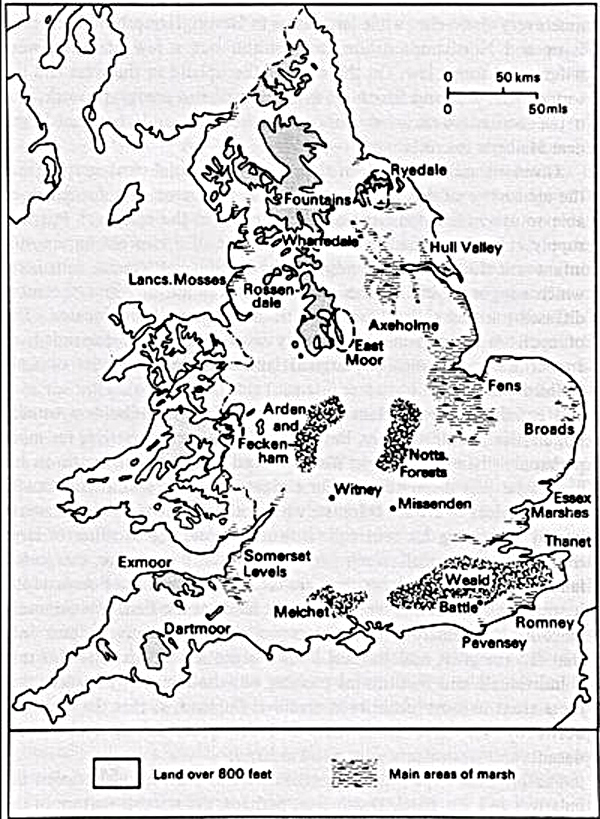

The above image (taken from Martin, Rob. The Commission of Sewers [cited 2 April 2011 Available from http://www.btinternet.com/~rob.martin1/bem/sewer.htm.) shows the location of Englandís main areas of marshland. Large marshes are found along the Atlantic coast of all western European countries and beginning in the 13th century these wetlands underwent, as described tn the following quote, extensives changes.
"It was in the 13th century that marsh diking became widely employed along virtually all of the Atlantic coastline of western Europe. During that epoch (c. 1050-1250), mounting demographic pressure on arable land led to an unprecedented era of agricultural expansion. This augmentation included not only the massive clearing of forest land, but also extensive marshland diking in a movement led by the great religious houses of the day. Examples are the coastal monasteries of the Benedictine and Cistercian monks, who, writes …tienne Clouzot, prescribed work for the body as part of monastic life, attacking the marshes in the same manner that inland monasteries were clearing the forests. As research points out, these diking efforts were part of a general European response to the environmental problem of mounting demographic pressure and a lack of easily arable land. The solution was widespread forest clearance and the concurrent development of marsh-diking activity throughout todayís British Isles, Germany, the Netherlands, Belgium, and France" (Hatvany, 2002, p.132 to 133).It is interesting to note that the 13th century is in the so called Medieval Climate Optimum, an epoch also known as the Medieval Warm Period.